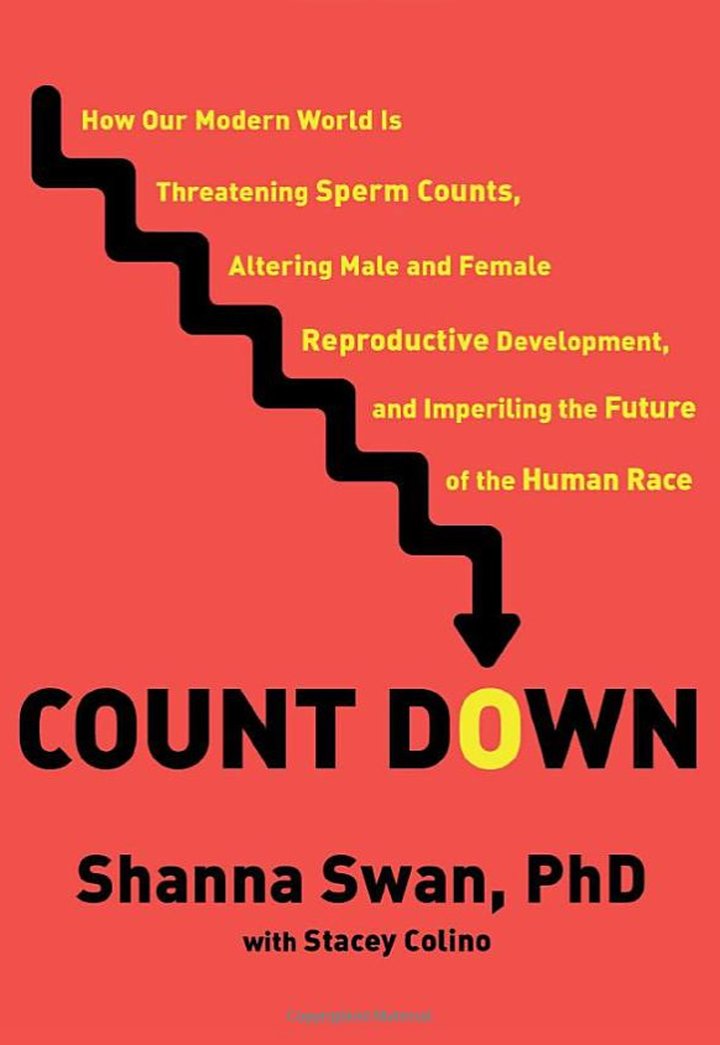…and more sacred by the minute. That’s because they’re getting scarcer, and are projected to disappear altogether in the next 24 years, according to a new, generally well-reviewed, book (e.g. here; or for a critical review, check this). Thanks to our addiction to certain human-made chemicals, we’re on a suicide mission to extinction. Not the slow “global-warming-ocean-acidification” extinction, or the quick “all-out-thermonuclear-war” extinction. Instead we’ve got sperm counts sliding inexorably down at the rate of about one percent per year. As a species, we’re on our way out.
(If you’ve seen Alfonso Cuarón’s 2006 flick The Children of Men, you know how this plays out: no babies having been born for 20 years due to worldwide infertility, society is in the process of collapsing. It’s a great movie, whatever the premise.)

The sperm count crisis (“crisis” = state of chaos and uncertainty) has been known for decades, at least since the 1970s, and certainly by 1992 when a Danish meta-analysis, the “Carlson Study” (after the principal author) brought it to the attention of researchers worldwide. It took another 25 years to make headlines, with the publication of a major meta-study in 2017 by Shanna Swan, a reproductive epidemiologist at Mount Sinai in New York. She followed up her scientific paper with a recently released book (co-written with science journalist Stacey Coloni) Count Down. Here are some of Swan’s findings, “harvested from hundreds of studies”:
In Western countries, sperm counts dropped by 59% between 1970 and 2011, from 99 to 47 million per milliliter. At this rate, they’ll be down to zero in 2045.
Testosterone levels in men have been dropping by 1% per year since 1982; a quarter of men experiencing erectile dysfunction are now under 40.
Due, at least partly, to deformed sperm, a woman’s risk of miscarriage increased by 1% per year between 1990 and 2011.
The average DOR (a measure of the number and health of a fertile woman’s eggs) has been falling, while cases of endometriosis have been rising over the past few decades.
Video: Clopedia, via Wikimedia. Creative Commons license.
While researchers are divided on the causes of these dystopian statistics, Swan’s main culprits are endocrine disrupting chemicals (EDCs), toxins that interfere with the hormone-producing network of glands collectively known as our endocrine system. These glands regulate the balance of such hormones as estrogen (mainly in women) and testosterone (mainly in men), the hormones responsible for deciding, among other things, the sex of a fetus, the onset of puberty…and pretty much everything that differentiates genders. When chemicals interfere with their natural functioning, problems like the ones found by Swan’s research ensure. In addition, testosterone-blocking chemicals can lead to poor fertility or infertility in men, plus feminizing effects such as smaller than average penises and testicles.
According to Swan, one class of EDCs is responsible for most of the problems: Phthalates cause both abnormalities and death in sperm. First manufactured in the 1920s, phthalates, aka “plasticizers,” are used to make plastics stronger, more flexible, durable and transparent. They’re everywhere, in plastics, electronics, cosmetics, pesticides, shampoos, hair spray, nail polish, shower curtains…(Other potential sperm-damaging carcinogens mentioned by Swan include bisphenol A or BPA, the resin that lines soda and beer cans; PFAS found in food packaging; and PCBs, which are now banned.)
Unfortunately for her credibility, Swan overstates her case, inviting a lot of “correlation isn’t causation” complaints, suspicions of cherry-picking data, and objections that “the dose makes the poison.” So while the precipitous drop in sperm count is real (at least, I haven’t read anyone arguing with those data), her focus on particular chemicals weakens her argument. For instance, endocrinologist Richard Sharpe of Edinburgh University (who originated the notion of EDCs in the 1990s) opined to science journalist Philip Ball that he “suspects that diet, lifestyle, medications and environmental chemicals all play roles, possibly in that order.”
However, taking Swan at face value, she offers a bunch of suggestions, from “don’t smoke” (duh), avoid obesity, don’t heat food in plastic containers, only eat meat free of additional hormones and antibiotics, eat organic, and rip up your wall-to-wall carpets. (She seems to be addressing the wealthier among us.) More tips on avoiding toxic kitchen chemicals here. And FWIW, here’s a study I found linking increased male fertility with a nutrient-dense diet.
Meanwhile, the irony is hard to avoid. Since humans are busily creating “the sixth extinction event,” the guilty ones are those that stand most to lose from our actions.
CLICK TO MANAGE